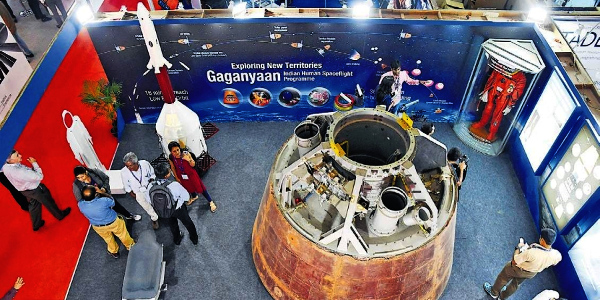BENGALURU: Twelve test pilots have cleared the first level of selection for India’s maiden human space-flight programme, Gaganyaan, which is scheduled for 2022.
The mission was announced on August 15, 2018, and the first selection round has been completed in just over a year at the Institute of Aerospace Medicine (IAM), a part of the Indian Air Force (IAF), in Bengaluru.
TOI had reported last month that the first set of Indian astronauts would be test pilots. The final crew will comprise four members.
The first selection level involved physical and psychological assessment. “Selected test pilots underwent extensive physical exercise tests, lab investigations, radiological and clinical checks, and evaluation on various facets of their psychology,” the air force said in a statement on Friday.
The IAF has decided not to reveal the participants’ names at this stage. But all 12 are male. Initially, the Indian Space Research Organisation (Isro) wanted to include women in the mission crew, but the tight project window meant officials didn’t have the time to conduct an extensive search and had to rely on the pool of IAF test pilots. India does not have a female test pilot.
More difficult trials await the 12 candidates. The second selection stage is expected to last for 75 to 90 days. “It will be specific to the challenges of space. After this round, the final four will be ready to train in Russia,” said a senior official privy to the details of project planning and development.
In the second round, IAM will study how the candidates handle physiological changes, disorientation and other effects associated with space travel. Their performance in microgravity will be assessed, and they will learn basic biology, physics, medicine and operation of different systems.
“Experts from respective fields will be roped in. IAM will teach the candidates medicine,” another official said.
IAM is well-equipped to test the space-flight hopefuls. It has systems which can simulate temperatures ranging from minus 20 degree centigrade to 60; a dry flotation simulator for microgravity; and a simulator which can create pressure that’s six times the atmospheric pressure, and pressure that exists at very high altitudes.
The institute boasts of a human centrifuge, which creates high G-forces and has certain profiles which can mimic microgravity and parabolic flights to some extent. It also has systems to help astronauts prepare for accidents or malfunction in the crew module.
Source: ToI
Image Courtesy: NIE
You may also like
-
New Heat-Based Approach To Cancer Treatment Can Reduce Chemotherapy Doses
-
Scientists Take A Major Step Towards Unification Of Classical & Quantum Gravity
-
India Graphene Engineering and Innovation Centre (IGEIC) Under the Vision of Viksit Bharat@2047 Launched
-
New High-Performance Gas Sensor can Monitor Low Level Nitrogen Oxides Pollution
-
Antidepressant Drug can be Repurposed for Treating Breast Cancer
